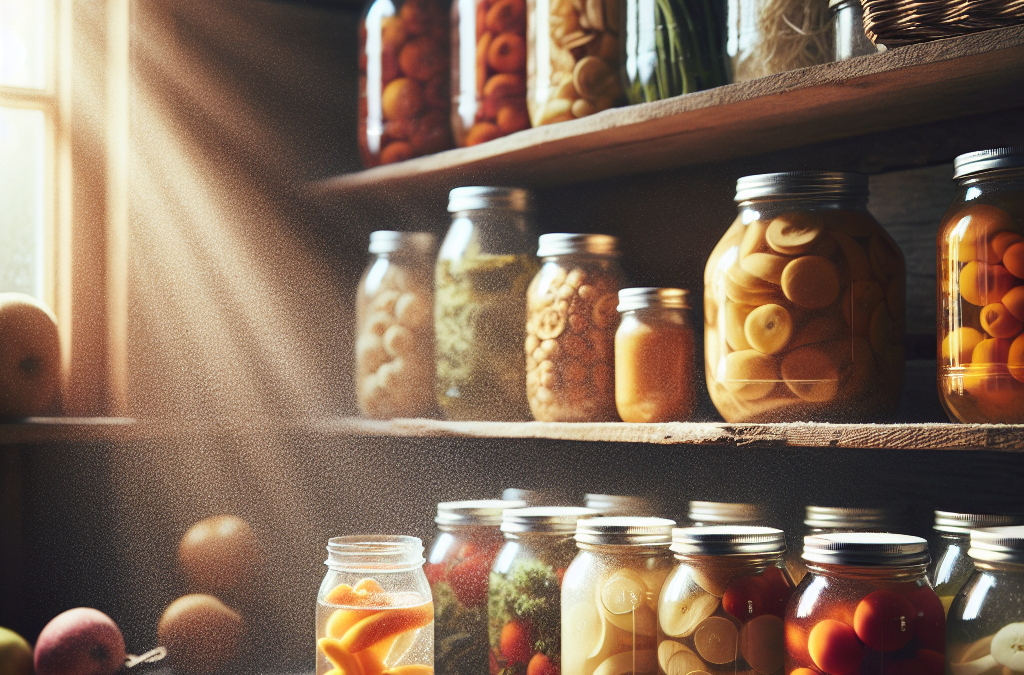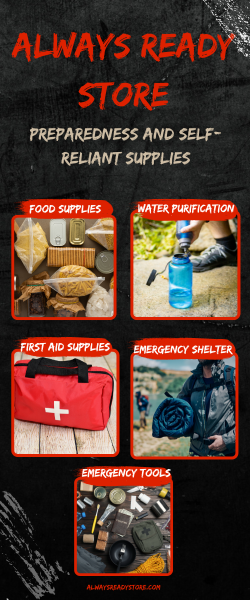Hey there! Let’s chat about the sustainable practices I’ve embraced for long-term food storage. It’s kind of a passion of mine, you know? It’s all about being smart with what we have and ensuring that good food doesn’t go to waste. So, here are the five key areas I focus on, and I can’t wait to share my experiences with you!
Choosing the Right Storage Containers
Materials Matter
First things first, the materials you choose for food storage can really make or break the whole operation. I’ve experimented with glass, metal, and plastic containers. Personally, I love glass because it’s non-toxic and doesn’t leach chemicals into my food. Plus, it’s super easy to clean!
That said, I do have a few sturdy plastic containers for things like grains and beans. It’s all about balance! Just make sure any plastic you use is BPA-free to keep things safe and healthy.
Don’t forget about vacuum seal bags! They’re fantastic for stashing away the goodness while eliminating extra air. It’s like wrapping your food in a protective hug, helping it last longer.
Size and Shape
Let’s talk about size and shape! I’ve got various sizes of containers – small for snacks and large for bulk items. It’s super practical to have a variety on hand. I can’t tell you how many times I’ve regretted using too big of a container for just a bit of food.
Also, consider the shape of your containers. I mean, stackable containers can save a ton of space in the pantry or freezer. Plus, you get that satisfying look of organization that makes me feel all warm and fuzzy inside!
Thank you for reading this post, don't forget to subscribe NOW for FREE!
Remember, it’s not just about storage; it’s also about making your kitchen look good. You know, eye-catching containers make a difference, and we all love a bit of aesthetic appeal.
Sealing and Labeling
Sealing is like the cherry on top of good storage practices! Make sure your lids are airtight to keep moisture and pests at bay. I love doing the double-check, making sure I hear that satisfying ‘pop’ when I seal a jar.
And can we talk about labeling? I can’t stress how much easier meal prep becomes when I know exactly what’s in each container. I started using a simple label maker and it’s a total game-changer. No more mystery jars lurking in the back!
And hey, don’t forget about dates! It’s important to keep track of when things were stored, especially if you’re using the “first in, first out” method. It saves you from the stress of trying to remember what’s in there!
Utilizing Preservation Techniques
Canning
Canning has been an absolute lifesaver for me! I remember the first time I tried it; I was so nervous but now it feels like second nature. The thrill of watching those jars seal is just exhilarating. I like to can tomatoes, fruits, and even some pickles.
The best part? It preserves the taste of summer all year long! Just be sure to follow safe canning guidelines. We don’t want any botulism creeping into our goodies.
I always set aside a weekend for canning, turn up some tunes, and have fun with it. It’s like a mini-party in the kitchen, and I get to share the fruits of my labor with friends!
Freezing
Freezing is another awesome technique I swear by! Seriously, it’s amazing how much food you can save by freezing. Fresh fruits, veggies, and even some cooked meals can easily be frozen for later use. I often spend a few hours prepping food for freezing whenever I have a surplus from the garden.
One tip I’ve learned is to slice or chop food before freezing. It makes it easier to portion and use later. Plus, foods like berries freeze perfectly on a baking sheet before they get stored in bags, preventing those clumps.
Don’t overlook the power of meal prep on your freezing days! I like packing entire meals in freezer-safe containers, so all I need to do is pop one out and heat it up. Believe me, it’s a lifesaver on those busy weeknights!
Dehydrating
Dehydrating food has become somewhat of a hobby for me! I love turning fruits into tasty chips or creating my own vegetable powders. It’s pretty cool knowing I can stretch out the life of food in a fun and creative way.
If you’re thinking about trying dehydrating, get a good dehydrator! It makes the process so much easier. I often whip up a batch of apple chips or dried herbs, and they last forever.
Plus, dehydrated foods make awesome snacks for road trips or hikes. They’re lightweight and packed with nutrients, which is a win-win. I even toss some in my granola, and it takes breakfast to a whole new level!
Buying and Storing in Bulk
Finding Local Sources
Buying in bulk from local farmers and markets is one of my favorite ways to save money and minimize packaging waste. I love talking to the vendors about their practices and knowing where my food comes from. It’s like connecting with my food on a deeper level!
Also, many local co-ops offer bulk buying options for grains, beans, and spices. Plus, you can bring your own containers, which feels great and helps cut back on single-use plastics.
Support your local economy! It’s so rewarding to build relationships with farmers and see my money going directly to them instead of big corporations.
Proper Storage Techniques
When it comes to storing bulk items, organization is key! I use clear bins labeled for grains, beans, and other staples. It makes it easy to grab what I need without rummaging around, saving me time and potential mess.
Also, keep a close eye on the temperature and humidity in your storage area. A cool, dark place is ideal for most items. Trust me, it’s worth investing in good storage solutions to protect your bulk buys.
Don’t be afraid to portion bulk items into smaller containers for easier use. I often do this with items like rice or flour, just to keep things fresh and manageable.
Using the Right Oxygen Absorbers
Finally, I use oxygen absorbers when I’m storing large quantities of dried foods. They help keep them fresher for longer! Just make sure to follow the instructions for how many to use based on the size of your storage container.
I like to buy them in bulk online, and they’re a total game changer! Knowing that I’m preserving my food efficiently gives me peace of mind and reduces waste. It’s like having a secret weapon in my food storage arsenal.
And don’t forget: Always check the expiration dates and replace the absorbers as needed. Keeping things fresh means you’ll always have delicious food at the ready!
Creating a Meal Planning Routine
Plan Ahead
Meal planning has been a total lifesaver for maintaining my food storage. I try to dedicate a bit of time each week to plan out meals based on what I have stored. It not only reduces waste but also saves time during busy weeks!
I love creating a simple template to keep track of what I’ll be using from my pantry and freezer. It’s nice to know that I can whip something up without scrambling for ingredients at the last minute.
Plus, it’s a fun opportunity to try new recipes! I regularly browse through cookbooks or blogs for inspiration, especially to make use of whatever’s in season. Cooking becomes an adventure!
Incorporating Seasonal Foods
When meal planning, I always keep the seasons in mind. Incorporating seasonal produce not only supports sustainable practices but also enhances flavor. Being aware of what’s in season often leads me to new ideas for dishes!
Using seasonal ingredients can also save you money when shopping at local markets. It helps me stay connected with nature’s cycles and keeps my diet varied and exciting.
Don’t hesitate to explore farmers’ markets for unique seasonal finds. You might discover some delightful fruits or veggies that you’d never thought about using before!
Keeping Track of Inventory
Finally, keeping an inventory of what I have on hand is essential. I simply use an app on my phone or even a good old-fashioned notepad. It helps me stay organized and avoid overbuying.
Plus, it’s satisfying to check things off as I use them up. I often feel like I’m on a mission to use everything in my pantry before it goes bad!
Don’t forget to regularly reassess your stock, especially when buying in bulk. This way, you can prioritize meals and ensure that what you have is being used rather than stored indefinitely.
Incorporating Sustainable Practices
Minimizing Waste
Sustainability isn’t just a trend; it’s a lifestyle. I focus on minimizing waste by using food scraps creatively. Those veggie peels? Yes, they can become broth! And stale bread? Croutons, here I come!
I’ve made it a point to share these tips with friends and family. It’s honestly heartwarming to see others embracing less waste in their lives. Plus, sharing ideas can spark fresh inspiration!
By keeping our waste minimal, we contribute to a healthier planet. It’s a small change that can lead to significant impacts. We can all make a difference, one food scrap at a time!
Educating Others
I believe that sharing knowledge can lead to broader changes in our communities. Conversations about food storage, sustainability, and minimizing waste can lead to real action. I love hosting little workshops with friends where we dive into storage techniques and canning.
Social media is another great platform for spreading the word. I often share my food storage successes (and sometimes failures!) on social channels to encourage others to give it a go. It feels like a supportive community effort!
Everyone can benefit from learning about food storage practices. The more we know, the more empowered we feel to make sustainable choices!
Supporting Sustainable Brands
One more way to practice sustainability is by supporting brands that focus on eco-friendly practices. I’m mindful of where I buy my storage containers, food, and other supplies. It feels good to invest in companies that prioritize our planet.
There are awesome brands out there that make biodegradable or reusable storage solutions. I often do a little research before making purchases to ensure my money goes to the right places!
By supporting sustainable brands, we send a message that we care about the environment. It feels good to know that I’m playing a part in fostering change, and I hope it inspires others to do the same!






